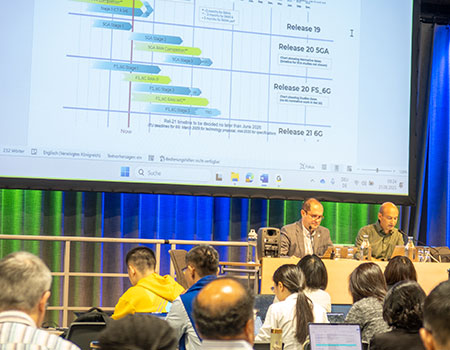Open RAN
January 20, 2021
As 5G is being deployed all over the globe, one of the new trends drawing a lot of attention is the Open RAN, which has been selected by a number of major operators for their 5G deployments.
Open RAN is made possible through standardized open network interfaces, defined in 3GPP, O-RAN Alliance, IEEE, and other SDOs and industry fora. To cater to all the diverse 5G use cases and operator’s deployment constraints, the standards define multiple NG-RAN architecture options and the associated open network interfaces. While these options are crucial in making 5G suitable to address all the requirements and challenges of the next generation mobile network, figuring out which option fits a particular practical use case is sometimes challenging. This is further exacerbated by the fact that relevant standards are scattered across multiple SDOs.
To help experts to unpack that complexity, Sasha Sirotkin, the 3GPP RAN3 Vice-chair has edited a new book ‘5G Radio Access Network Architecture: The Dark Side of 5G’, with material contributed by a number of domain experts, active in various 3GPP working groups.
The following material is provided by Sasha and the publisher Wiley-IEEE, as a short introduction to the topic.
Monolithic vs. split architectures
When discussing the 5G RAN architectures, we often talk about functional splits – as opposed to the “monolithic” architecture in which a gNB is defined, and often implemented, as a single network node. The assumption that split architectures are unique to 5G is not entirely correct. Even though 3GPP defined the 4G eNB as a single monolithic logical network node, in practice deployments with Remote Radio Heads (connected via CPRI) were rather popular. And of course, there was the FAPI specification from the Small Cell Forum for LTE, not to mention various proprietary split implementations.
What’s new in 5G
With the advent of 5G, the industry realized the need for better standardization of RAN in general, and functional splits in particular. During the 5G study in Release-14, 3GPP have considered multiple split variants, illustrated by the figure below.

After extensive discussions, 3GPP have reached the consensus to define two NG-RAN split architectures (in addition to the traditional “monolithic” one):
- the high-level CU/DU split (option 2),
- and NG-RAN architecture with separated control and user plane functions.
Naturally, Small Cell Forum also evolved their FAPI specification (option 6) to support 5G, while O-RAN Alliances defined the low-level split (option 7). Furthermore, CPRI specification was enhanced (and is now referred as eCPRI) to support not only option 8, but also higher splits. This joint effort across multiple SDOs is a testament to the importance of Open RAN to the whole industry, which is now enabled through the definition of open standardized network interfaces between the split NG-RAN network nodes.
About the Book
|
‘5G Radio Access Network Architecture: The Dark Side of 5G’ starts by describing the 5G requirements and use cases, and why re-thinking of the RAN architecture is needed to support these. Besides the NG-RAN architectures defined in 3GPP Release-15 (and other SDOs around that time), the book describes how the RAN has evolved in Release-16 with the addition of wireless relaying (also referred to as Integrated Access and Backhaul [IAB]) and satellite access support (also referred to as Non-terrestrial Networks [NTN]) and how the RAN is likely to evolve in Release-17 and beyond. Besides the 3GPP standards, the book also covers architectures defined in O-RAN, ETSI and Small Cell Forum and provides information on other relevant technologies, such as virtualization, open source, and transport networks. The book is available on Amazon (https://www.amazon.com/dp/1119550882); further information can be found on the book’s website https://www.darksideof5g.com/ |
 |
Further Reading
The following 3GPP Technical Reports (TRs) can be useful to understand how the NG-RAN functional split discussions progressed in 3GPP:
- TR 38.801 Study on new radio access technology: Radio access architecture and interfaces
- TR 38.806 Study of separation of NR Control Plane (CP) and User Plane (UP) for split option 2
- TR 38.816 Study on Central Unit (CU) - Distributed Unit (DU) lower layer split for NR
Do note, however, that the above documents are not normative specifications – therefore, they should be used only for background information. For more details about the CU/DU split architecture check the TS 38.47x series and for the control-user plane separation the TS 38.46x series...here.
Contact for this article: Kevin FLYNN, Marketing and Communications Officer, 3GPP

 3GPP News
3GPP News




